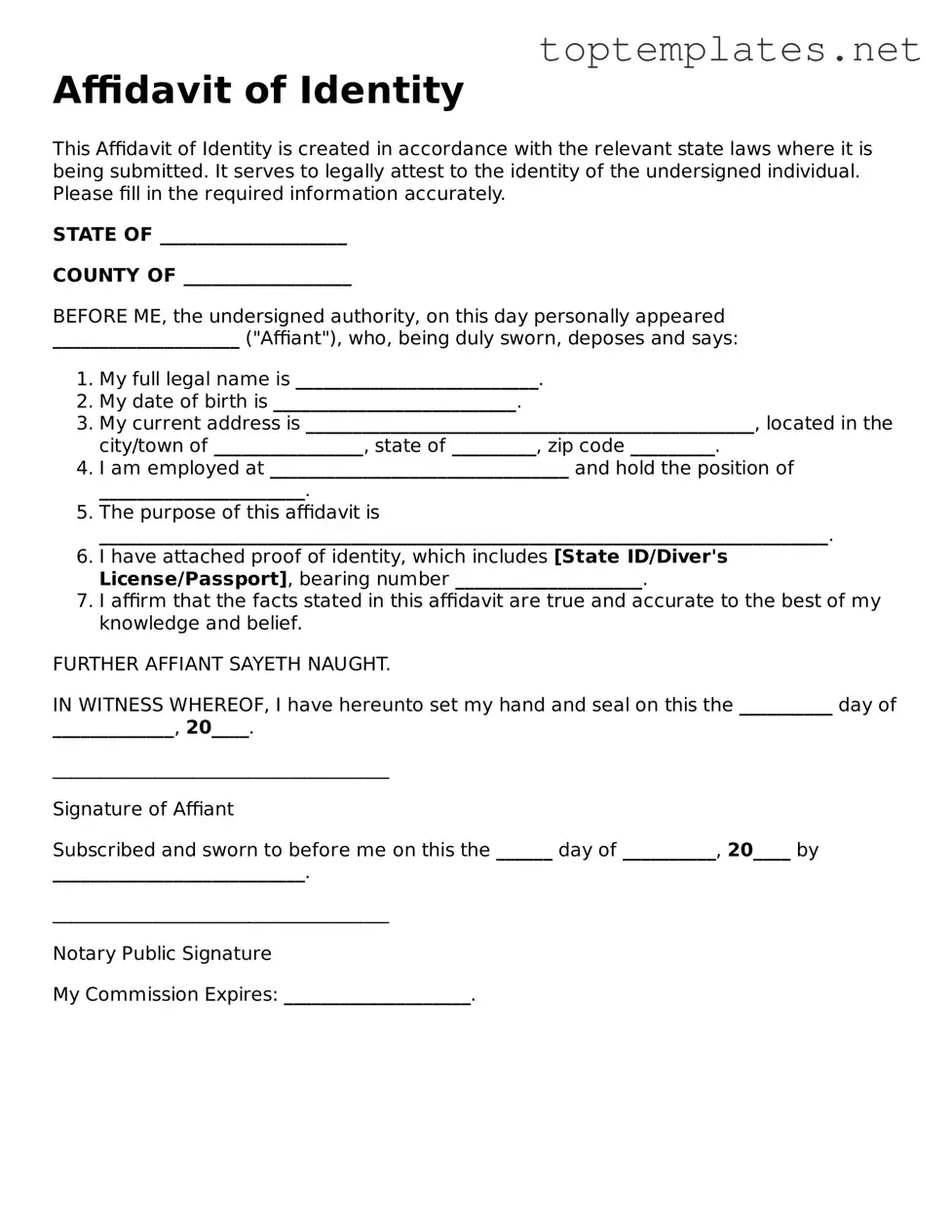Affidavit of Identity
This Affidavit of Identity is created in accordance with the relevant state laws where it is being submitted. It serves to legally attest to the identity of the undersigned individual. Please fill in the required information accurately.
STATE OF ____________________
COUNTY OF __________________
BEFORE ME, the undersigned authority, on this day personally appeared ____________________ ("Affiant"), who, being duly sworn, deposes and says:
- My full legal name is __________________________.
- My date of birth is __________________________.
- My current address is ________________________________________________, located in the city/town of ________________, state of _________, zip code _________.
- I am employed at ________________________________ and hold the position of ______________________.
- The purpose of this affidavit is ______________________________________________________________________________.
- I have attached proof of identity, which includes [State ID/Diver's License/Passport], bearing number ____________________.
- I affirm that the facts stated in this affidavit are true and accurate to the best of my knowledge and belief.
FURTHER AFFIANT SAYETH NAUGHT.
IN WITNESS WHEREOF, I have hereunto set my hand and seal on this the __________ day of _____________, 20____.
____________________________________
Signature of Affiant
Subscribed and sworn to before me on this the ______ day of __________, 20____ by ___________________________.
____________________________________
Notary Public Signature
My Commission Expires: ____________________.
